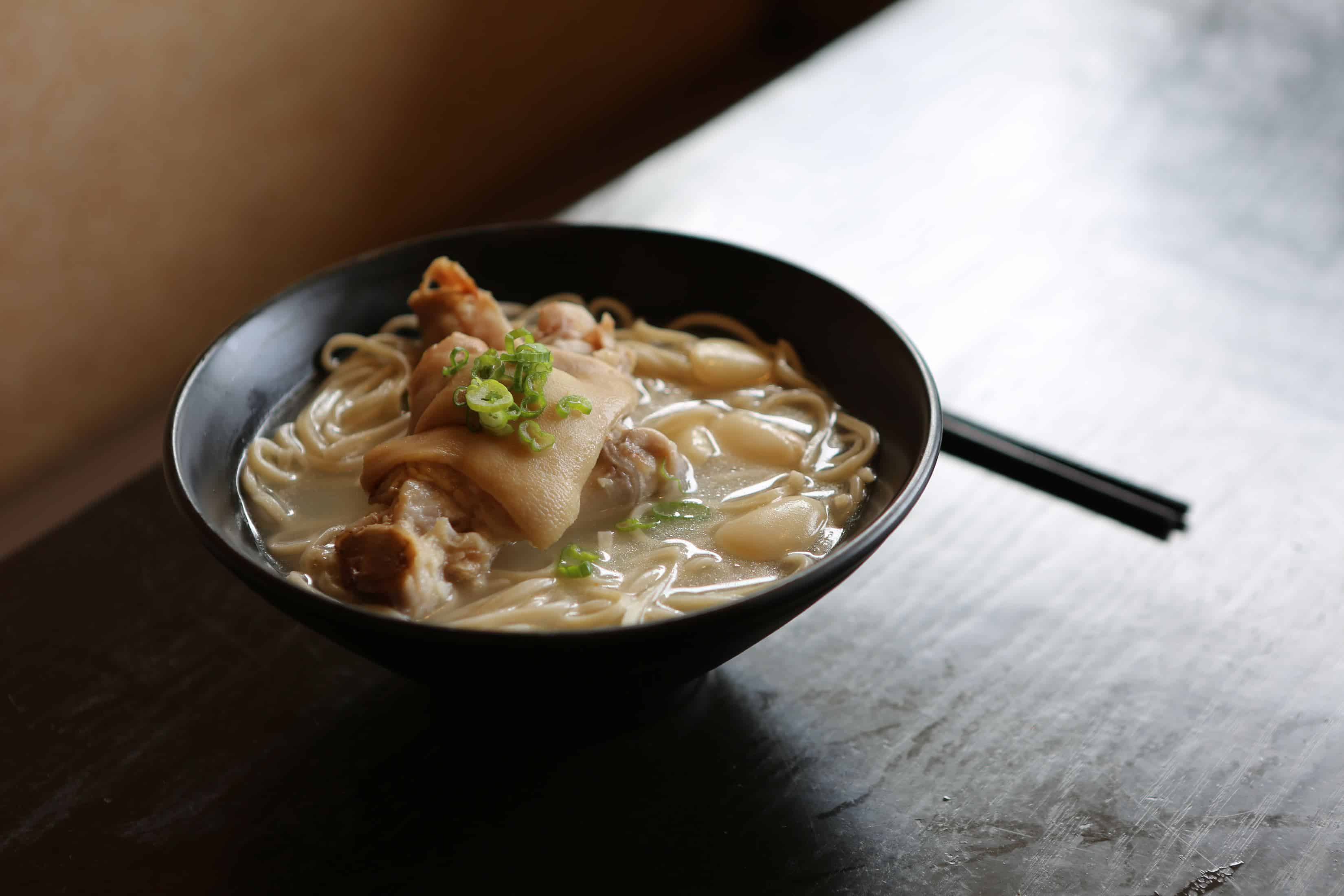Be polite! How do you say “thank you for the food” in Japanese?
If you’re dining with a Japanese friend or staying briefly in Japan, learning a few phrases to say while enjoying Japanese food can be very useful.
For example, how can you tell your friend that the sushi tasted so good that it was “delicious” in Japanese?
Or that the sake you just tasted was simply “the best”, or the tempura and sashimi you’re eating “tastes wonderful”?

Of course, since English is an international language, you can easily communicate your feelings in English.
Anyone living in the modern world will get to grips every now and then with at least a few English words or phrases.
But if you dine in Japan or are invited by a friend to a Japanese meal, it’s very beneficial to know a few Japanese phrases in advance.
How do you say “thank you for the food” in Japanese?
When saying “thank you for the food”, you can use the Japanese phrase “gochisou sama deshita”, which literally means “it was a feast” and is used to say “thank you for the meal”. Or you can use “oishii” to say “delicious!”
For the pronunciation, view this helpful video from Japanesepod101:
When said before or during a meal, it’s quite like “bon appétit” in France or “mahlzeit” in Germany to wish everyone a good meal.
It allows you to follow good table manners and show your appreciation for good food. It can also help ease the atmosphere at the dinner table!

Check out our new cookbook
Bitemybun's family recipes with complete meal planner and recipe guide.
Try it out for free with Kindle Unlimited:
Read for freeIn this post we'll cover:
The various phrases to say “delicious” in Japanese
“Oishii” is the easiest and most common word to say that Japanese food is “delicious”. To some extent, it’s universally known that your Japanese host would expect you to say “oishii”.
There’s also “umai”, which means the same thing. “Umai” in Japanese also means “delicious”, but it’s more informal and is particularly used among groups of young boys.
The traditional way of acknowledging the food’s taste is by saying “hoppe ga ochiru”. Interestingly, it means “the food is so delicious that your cheeks drop off”, which is a humorous way of expressing the food’s tastiness.
But the more formal way to enjoy good food is to say “aji” in Japanese, which means “taste”. “Bimi” is a more important and strong term when you display your written gratitude.
Japanese people might also say “saiko”, mostly after a beer. “Saiko” means “this is the best” and is used when consuming drinks, not food.
You might hear “saiko” instead of “oishii” a lot at a bar in Japan because after drinking the popular sake by Hakutsuru, it’s more appropriate than “oishii”.
Likewise, if you hear the uttering of “siawase”, you can be sure that Japanese girls are enjoying sweets and candies like mochis.
The same word could also be used to compliment a meal and other dishes, as “happiness” is the true meaning of “siawase”.
How you can say “thank you” at the Japanese dinner table?
Now, let’s move on and discuss how you can show your gratitude at a Japanese dinner table. The Japanese phrases to express your appreciation are shockingly more than simply “thanks”.
The 2 expressions are “gochisou sama deshita” and “itadakimasu”.
You can say “itadakimasu” at the beginning of the meal and “gochisosama deshita” at the end of it.
If you haven’t begun dinner yet, “itadakimasu” is what you’ll want to say. The word “itadakimasu” can be translated as “I humbly accept it”, but the significance implied is far beyond that.
“Itadakimasu” is a way to be thankful and remember the people who acted as a conduit between you and the food for the Japanese. It includes peasants, vendors, chefs, family, and so on. The diner also acknowledges the sacrifice of animals and vegetables in becoming the meal.
The phrase at the end of a Japanese meal is “gochisosama deshita”. The literal meaning of this expression is “it was a feast” or “it was a delicious meal”, but the intended meaning is “thank you for the meal”.
Table manners and dinner table customs in Japan
It may be very difficult for a person from Europe or other cultures to properly understand and observe Japanese dinner table customs. Yet following a few common dinner customs and table manners is comparatively simpler.
A Japanese dinner table’s main seat is reserved for the group’s most important person. Known as “kamiza”, this seat is usually placed on the farthest side of the dinner table from the dining hall’s entrance.
The use of chopsticks is related to some of the key table manners at a Japanese dinner table. In Japan, when everyone’s holding chopsticks, no one talks to each other.
If you want to have a quick chat with your fellow diner, you must place your chopsticks calmly on the designated stands.
Likewise, you aren’t permitted to position the chopsticks in a bowl upright, as it’d be a traditional reminder of death.
Just don’t use chopsticks to skewer your food and eat it off of the end. Plus, you can’t cut your food with them as if they were a knife.
Also, always make sure you don’t use your chopsticks as a drumstick and don’t chew or lick them.
You should also take special care not to move food between different chopsticks. You can move food from the main plate to your bowl using chopsticks, but you certainly shouldn’t swap chopsticks with someone else.
Is it ok to slurp in Japan?

Though it might surprise you, it’s good etiquette and even appreciated to slurp in Japan or chew noisily while eating Japanese noodles.
The Japanese are very polite and well-mannered and slurping is a way of thanking the cook who made the meal.
Slurping demonstrates enjoyment and gratitude. This means the hot noodle dish was so tasty that you couldn’t wait until it got cooler, so you just had to slurp it up!
As mentioned earlier, understanding and following all the dinner traditions of a culture you’re recently acquainted with isn’t very practical. Yet knowing all these practices will allow you to be accepting of certain practices your hometown might frown upon.
Read more on Japanese table manners here in our article about teppanyaki
More common Japanese phrases at the dinner table
Apart from “itadakimasu” and “gochisousama”, there are several important phrases that are good to recall when you happen to eat with a Japanese friend or visit Japan.
Okawari
Okawari can be translated as “more food please”. The perfect time to say “okawari” is when you’ve finished your plate and want a second helping because you haven’t had enough food to satisfy you.
Leaving food on your plate after you’re finished eating is considered rude, particularly when you’ve requested a second helping. So it’s best to ask for the exact amount you’d like to eat.
If you’ve run out of rice, it’s the perfect time to use this phrase. To say “gohan okawari kudasai” means “more rice please”.
Oishii
Oishii means “the food tastes wonderful”. Using this word mid-chew is a great way to praise the chef so the people you eat with also know how much you enjoy the food.
You can also say it to let the host know that their food was exactly what you imagined.
The best way to learn how to pronounce “oishii” like a Japanese native is to mimic many Japanese reality TV stars. When served the delicious food they’re regularly asked to consume, they scream “oooiiishii!” with their eyes closed and chin raised.
Kekkou desu
“Kekkou desu” means “no thanks” when you’re presented with something. If you don’t want to eat a particular dish, you can use this word because you know it won’t sit well with you.
You can also use this expression when you’re finished and someone asks you if you want to eat something.
Onaka ga ippai
“Onaka ga ippai” means “I’m full.” This term is best used right after dinner when you’re still sitting at the table and have had a little too much to eat.
Often, this statement is helpful if you have to leave some food on the plate but want to be respectful about it.
“Kekkou desu” and “onaka ga ippai” fit together well when you say, “No thank you, I’m full.”
When to use “desu” and “kudasai”
If you were reading carefully or already know a bit of Japanese, you might have seen that “desu” only follows “kekkou” and not any of the other phrases. That’s because “kekkou” on its own has a very harsh tone.
Here are some things to know:
- “Itadakimasu” and “gochisousama” don’t need “desu” to follow them.
- “Onaka ga ippai” and “oishii” will be more polite when followed by “desu”.
“Kudasai” means “please”, so you might want to add it to a phrase that’s a question to someone (like “okawari”), particularly when you ask someone who’s older than you.
Is bringing your palms together necessary?
Putting your palms together and taking a small bow is a symbol of deep respect, especially when you give thanks in Japan.
You can use that with both “itadakimasu” and “gochisousama”. Still, to this day, a lot of people in Japan will put their palms together while using “itadakimasu” and “gochisousama” to give their thanks an extra bit of gratitude.
You don’t have to do it if you don’t feel comfortable doing it. You’ll be totally fine without it; people won’t view it as disrespectful.
Read more: this is what a Japanese Konro grill is for
Check out our new cookbook
Bitemybun's family recipes with complete meal planner and recipe guide.
Try it out for free with Kindle Unlimited:
Read for freeJoost Nusselder, the founder of Bite My Bun is a content marketer, dad and loves trying out new food with Japanese food at the heart of his passion, and together with his team he's been creating in-depth blog articles since 2016 to help loyal readers with recipes and cooking tips.
